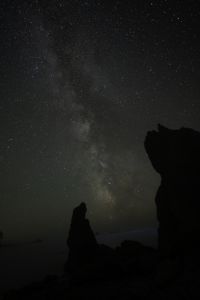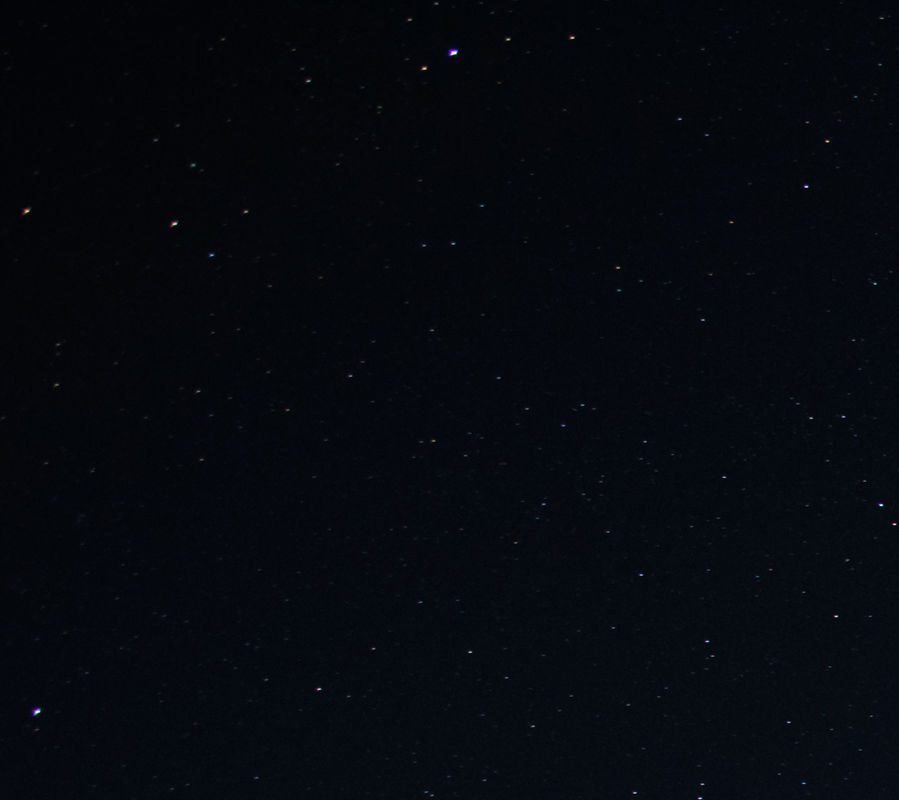Nikon 20mm 1.8 and Milky Way photography
Sep 7, 2021 12:24:15 #
ahudina
Loc: Browns Point, WA
To simplify this, I am only interested in hearing from actual users of this lens for Milky Way photography. I have other lenses (Sigma Art which I love) but they are very heavy to cart around and I was looking for a lighter alternative. I’m using the Nikon 20mm 1.8 on a Nikon D 850. How far do you have to stop it down to eliminate coma? Last night I shot it at 2.4 and the coma was severe. I find it hard to see coma in the field on the LCD screen even when enlarged and dark skies are about 2 plus hours away so field experimentation is difficult, hence my inquiry. Any experience based suggestions would be greatly appreciated. Thanks.
Sep 7, 2021 12:37:47 #
Why can't you make several shots at different f values on the same 2 hour trip to your dark sky site and determine what settings work best for YOU?
Sep 7, 2021 12:40:31 #
Sep 7, 2021 14:33:13 #
Could it be that your "coma" is actually due to stars moving in our sky as the earth rotates There is a rule of 600, and a somewhat more limiting rule of 500, that say that your maximum shutter open time in seconds to prevent stars smears due to earth rotation during the exposure should be no longer than 600 (or 500) divided by the full frame focal length of the lens used (or it's crop sensor equivalent field of view) My milky way photography has been done on a Sony crop sensor using an f 2.8 11mm (17mm equivalent angle of view) 500/17 = 29 seconds. I find that a 30 second exposure with the lense wide open @ f/2.8 and ISO set at 3200 is usually a good starting point for exposure experimentation. In your case 500 /20 mm yields a max exposure time of 25 seconds.
If your intent is to photograph stars as round points. then your shutterspeed becomes a fixed variable and the aperture and ISO varialbes must be adjusted. Since maximum aperture diameter is lens limited, you will have to experiment to find the correct exposure using ISO. if you still get coma, then stop down the aperture a bit and adjust the ISO accordingly. BUT to prevent star sear, the shutter time has an absolute maximum (unles you have an astronomers motorized mount to follow the stars. BUT If you have something earthbound in your frame, then an astronomers motorized mount would result in the terrrestrial objects being smeared by camera motion.) Hope this tidbit of knowledge helps.
If your intent is to photograph stars as round points. then your shutterspeed becomes a fixed variable and the aperture and ISO varialbes must be adjusted. Since maximum aperture diameter is lens limited, you will have to experiment to find the correct exposure using ISO. if you still get coma, then stop down the aperture a bit and adjust the ISO accordingly. BUT to prevent star sear, the shutter time has an absolute maximum (unles you have an astronomers motorized mount to follow the stars. BUT If you have something earthbound in your frame, then an astronomers motorized mount would result in the terrrestrial objects being smeared by camera motion.) Hope this tidbit of knowledge helps.
Sep 7, 2021 16:48:02 #
ahudina
Loc: Browns Point, WA
Thanks to ALL who provided THOUGHTFUL comments. I should have been more detailed and included an image for an example. But I was tired after driving 6 hours yesterday and sitting/standing around the beach for 6 more hours, so here are some additions to my prior inquiry, with an attached/stored straight out of camera/no post processing image. I shoot with Nikon D 850's (no not a special model, just 2 of them). Yes, I know the horizon is not straight, one of my pet peeves as well, but I'll either warp it a bit in post and correct it or use one of the un-tracked images I shot to blend with the Milky Way (MW), so that the foreground is sharp. Yes, I shoot tracked (I should have originally stated this) with a Move Shoot Move (that's the brand) motorized tracker. My sweet spot is ISO 800, 90 seconds, usually around 2.4 to 2.8 with Sigma Art glass (14-24mm f2.8, 14mm f1.8 and 40mm f1.4). The tracker is polar aligned with the compass on my cell phone to 0 degrees north and fine tuned with a Williams Optics wedge and laser. I rarely have star trailing and usually good, sharp stars. I bought the Nikon 20mm because as you all know Sigma Art glass while great is awfully heavy to carry around and especially down to the beach, actually back up the trail is harder :). I was hoping to get real world experience with this lens. I sent the first one back (Thank you B&H) as it was simply soft. I was hoping to see if coma on stars was a characteristic of this lens or perhaps I got another bad copy but for a Nikon prime this seems unlikely. I was trying to avail myself of this groups expertise as changing lenses and cameras in the dark on the coast even with a red light is not pleasant. I'm hoping this image comes through and if anyone has insights into this particular lens and issue I would appreciate hearing them. Thanks again for your assistance.
Sep 7, 2021 16:51:38 #
ahudina
Loc: Browns Point, WA
Sorry, image was too big so I downsized, now it's too small, I give up.
Sep 7, 2021 21:47:32 #
Your investment in motorized drives indicates that yu are serious about this night sky photography. I should not presume to offer advice to someone who knows more about the subject than do I. Check out this link for DXO Mark's lens review https://www.dxomark.com/Lenses/
and this one for Ken Rockwell's review ttps://www.kenrockwell.com/nikon/20mm-f18.htm#perf
BTW the aging 2016 reviews for your Nikon 20 f 1.8 were apparently pleased with your lens make/model but ANY manufacturer can put out stinker lens designs or bad copies of qood designs. My memory of the details is hazy but I recall that a major manufacturer had serious quality control problems when they FIRST subcontracted their manufacturing process to SE Asia companies. The brand name may be a good indicator but is no absolute assurance of excellence to go with the brand name induced cost.
Since you have a motorized drive, I'd do a retry/reshoot with another of your lenses to verify whether the problem resides with a lens. You should be able to find a place nearby where a valid comparison could be made.
and this one for Ken Rockwell's review ttps://www.kenrockwell.com/nikon/20mm-f18.htm#perf
BTW the aging 2016 reviews for your Nikon 20 f 1.8 were apparently pleased with your lens make/model but ANY manufacturer can put out stinker lens designs or bad copies of qood designs. My memory of the details is hazy but I recall that a major manufacturer had serious quality control problems when they FIRST subcontracted their manufacturing process to SE Asia companies. The brand name may be a good indicator but is no absolute assurance of excellence to go with the brand name induced cost.
Since you have a motorized drive, I'd do a retry/reshoot with another of your lenses to verify whether the problem resides with a lens. You should be able to find a place nearby where a valid comparison could be made.
Sep 8, 2021 01:17:47 #
Orphoto
Loc: Oregon
Here is a partial answer. I had 2 copies of the 20 1.8 for astro work. One was really messed up. The second one had nasty coma wide open, slightly better at f2 and halfway ok at f2.8. Sadly I never experimented with it over a wider aperture range. I concluded that I was better off with a zeiss 21 wide open and got rid of the nikon 20.
The image is a crop done on a d810 showing the left upper corner full frame. This is at f2.8. You can characterize the degree of coma subjectively yourself. Clearly it is not yet eliminated.
The image is a crop done on a d810 showing the left upper corner full frame. This is at f2.8. You can characterize the degree of coma subjectively yourself. Clearly it is not yet eliminated.
Sep 8, 2021 06:54:09 #
Comatic distortion is not star tracks due to rotation. It is an inherent characteristic aberration of the lens most apparent at lower f stops. It cannot be corrected in post. While you can try different copies of the same lens to find one that performs better, it’s likely that you’ll need to go with different lens that’s known for its lack of comatic distortion. Good luck!
Sep 8, 2021 07:15:32 #
Since you are obviously serious about getting great night sky photos, you have to take a serious look at the limitations of your equipment. It just may be possible that to be sure you are using the best possible options, you'll have to consider Nikon mirrorless equipment. Nikon's Z 20mm 1.8 has an inherent advantage over its 20mm AF-S non-mirrorless lens counterpart, especially at the edges. If you have 2 D850's, you might consider selling one and getting a Z7II with the Z 20mm 1.8, so as to get the best possible images for all of your efforts.
Sep 8, 2021 07:49:46 #
A tip: Don't limit replies to people who have the same gear as you do. I'm sure lots of people could suggest solutions even though they don't have that lens.
Sep 8, 2021 10:12:57 #
Sep 8, 2021 10:22:49 #
whfowle
Loc: Tampa first, now Albuquerque
If you want to stay Nikon, the new Z cameras and lenses have a very good reputation in astrophotography. Z6 or Z7 and the 20mm f1.8. This package is very light and the lens is known to have very low comatic and chromatic distortion.
Sep 8, 2021 10:25:14 #
ahudina wrote:
Thanks to ALL who provided THOUGHTFUL comments. I... (show quote)
To get pinpoint stars at 90 seconds you have to be very accurate on your polar alignment, and it's not the North Star (Polaris). Maybe you already know this. A cellphone compass won't get you there.
Sep 8, 2021 10:37:27 #
jerryc41 wrote:
A tip: Don't limit replies to people who have the same gear as you do. I'm sure lots of people could suggest solutions even though they don't have that lens.
And it’s not like we’re gonna listen if we have an opinion.
If you want to reply, then register here. Registration is free and your account is created instantly, so you can post right away.






